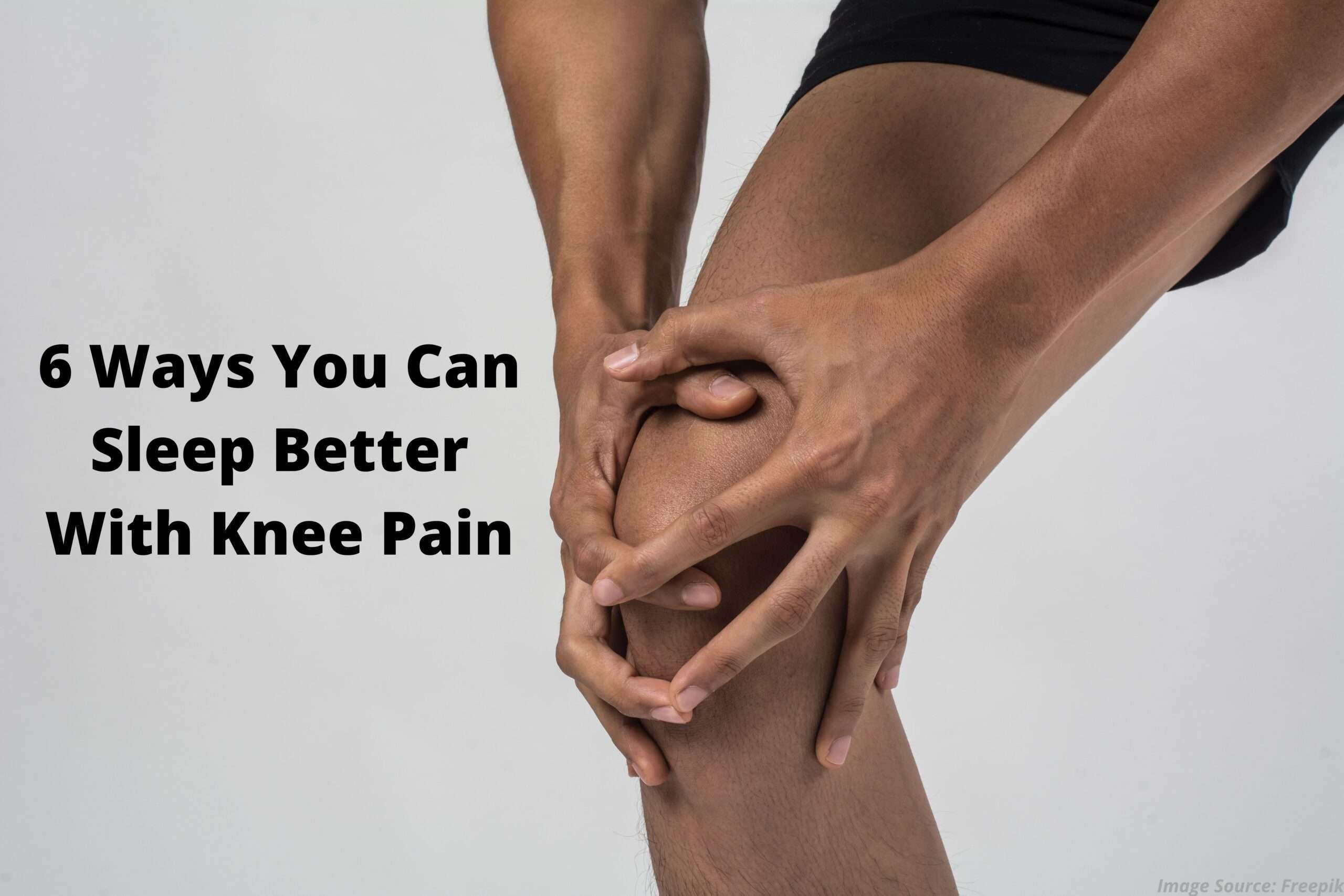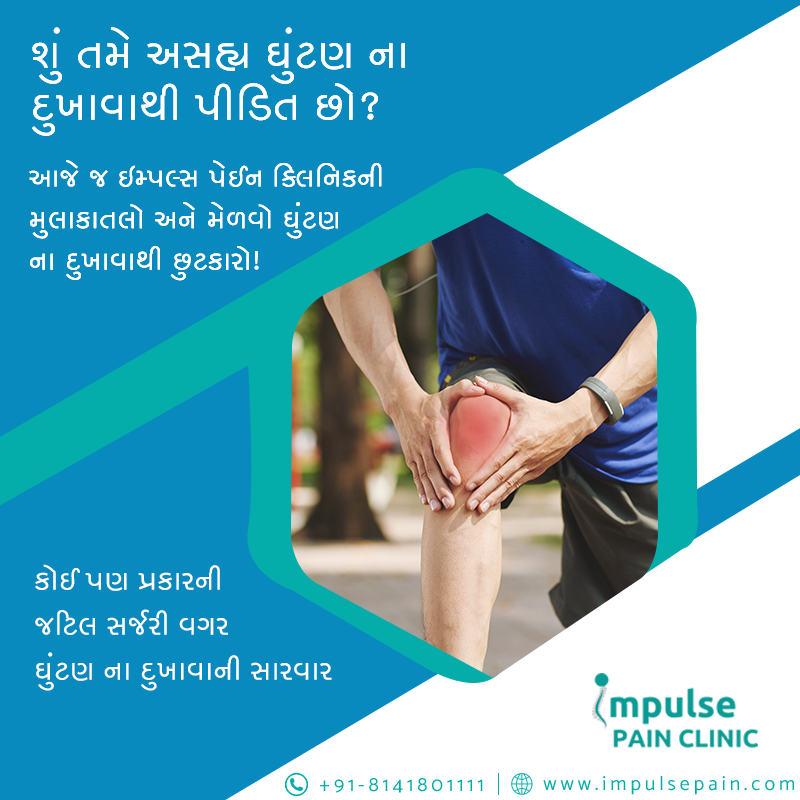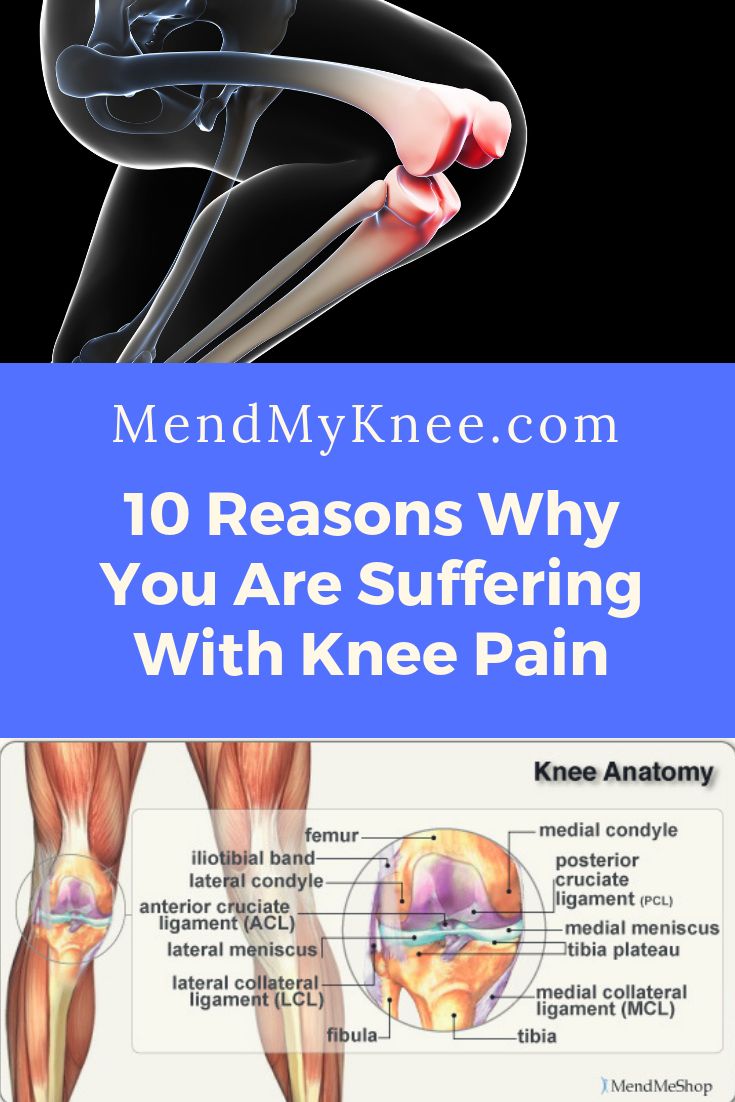Knee Pain From Osteoarthritis
Osteoarthritis is at the root of chronic joint inflammation, and the American College of Rheumatology estimates it affects over 27 million Americans aged 25+. Knee pain caused by osteoarthritis is one of the top reasons people receive knee transplants. Osteoarthritis also happens to be the #1 underlying cause of knee pain in people over the age of 50.
What is osteoarthritis?
Osteoarthritis happens when the cartilage that protects and cushions the bone ends wears down over a long period of time. This is why osteoarthritis is more common in people aged 50+, as the natural ageing process and years of stress on the joints take its toll.
Knee pain from osteoarthritis is often accompanied by pain in the hands, back, hips, or any other major joints.
While you cannot undo the damage to the joints caused by osteoarthritis, many can manage knee pain with some simple lifestyle adjustments, including lower impact exercises, anti-inflammatory diet, and over-the-counter pain medications. Promising natural remedies for knee pain from osteoarthritis include various anti-inflammatory herbs and plants like CBD oil and turmeric.
If youre under the age of 50, you can help prevent osteoarthritis by:
- Preventing joint injury by warming up prior to exercise, doing low-impact exercise, etc.
- Keeping your blood sugar in check
- Listening to your body
Will Surgery Treat And Cure Knee Pain
Surgery
Knee operations range from arthroscopic knee surgery to total knee replacement. Arthroscopic knee surgery is a very common surgical procedure that allows the physician look inside your knee through a few small holes and a fiberoptic camera. The surgeon can repair many of the injuries and remove small pieces of loose bones or cartilage. This is a common outpatient procedure.
Partial knee replacement: The surgeon replaces the damaged portions of the knee with plastic and metal parts. Because only part of the knee joint is replaced, this procedure has a shorter recovery then a total knee replacement.
Total knee replacement: In this procedure, the knee is replaced with an artificial joint.
Other therapies
Acupuncture has shown some relieve of knee pain, especially in patients with osteoarthritis. Glucosamine and chondroitin supplements have shown mixed results in research studies.
Urgent Advice: Get Advice From 111 Now If:
- your knee is very painful
- you cannot move your knee or put any weight on it
- your knee is badly swollen or has changed shape
- you have a very high temperature, feel hot and shivery, and have redness or heat around your knee this can be a sign of infection
111 will tell you what to do. They can tell you the right place to get help if you need to see someone.
Go to 111.nhs.uk or .
You can also go to an urgent treatment centre if you need to see someone now.
They’re also called walk-in centres or minor injuries units.
You may be seen quicker than you would at A& E.
Read Also: Can Knee Cartilage Be Regrown
What Natural Home Remedies Relieve Knee Pain
Over-the-counter pain medications can frequently alleviate the pain. If someone is taking these medications on a regular basis, he or she should see a health care professional to evaluate the knee pain for proper diagnosis and to avoid the potential side effects of chronic medication use.
The RICE mnemonic is often helpful, especially for minor injuries:
Rest: Rest the joint, and take a break from your usually activities involving the knee joint.
Ice: Applying ice can help with pain and inflammation.
Compress: A compression bandage can help prevent swelling and help knee alignment. It should not be tight and should be removed at night.
Elevate: Elevation can help with swelling and resting of the knee.
Is Surgery Ever Needed For Anterior Knee Pain

In some cases of patella instability, where the kneecap dislocates often we need to consider surgery to reconstruct the ligament which holds the patella in place.
In cases of severe arthritis of the patella, we occasionally need to consider a joint replacement if you do not respond to a compression sleeve, injections, activity modification, and physical therapy.
Patella tendonitis or a jumpers knee will usually respond to activity modification and physical therapy. It is not unusual for your recovery to take up to 6-8 months. If the pain remains severe, there has been a recent interest in trying PRP injections to regenerate the patella tendon. It is still controversial whether or not PRP injections are useful. Surgery, although rarely needed, can be very useful in severe cases of a jumpers knee.
You May Like: Can Knee Replacement Cause Neuropathy
Causes Of Pain Behind The Knee
There are a number of causes of pain behind the knee, which include:
- your knee joint wearing down as you get older for example, you may have osteoarthritis or rheumatoid arthritis
- a knee injury
- a benign or cancerous growth
- an infection
You can access a range of treatments on a pay as you go basis, including physiotherapy. Find out more about physiotherapy >
Anterior Knee Pain In Middle
- Osteoarthritis : Arthritis of the patella causes pain because the cartilage under the kneecap is thinning. Arthritis, which only involves the patella in your knee, is more common in women. Physical therapy can be very effective in the early stages of osteoarthritis of the patella. Injections and over the counter medications may have a role in some patients. In some situations, when the arthritis is severe, a patient will need to consider a tibial tubercle osteotomy, replacement of the patella, or a total knee replacement if the arthritis is elsewhere within the knee.
Read Also: How To Reduce Swelling In Knee Quickly
Why Does My Knee Hurt
If you are experiencing knee pain when walking, knee pain when bending, knee pain when resting, or are hearing popping/clicking in your knee, etc., it may be a minor concern or indicator of a serious issue.
Knee pain is usually caused by traumatic injuries, repetitive motion injuries, long-term wear & tear, or tissue disorders. Below are injuries that are common causes for knee pain, but it is best to enter your symptoms into our Knee Pain Diagnosis Symptom Checker to gain a better understanding of your injury.
For Tendinitis Runners Knee Gout And Bursitis
The treatment for conditions that cause swelling, redness, and dull, burning pain usually starts with resting the joint. Ice your knee to control swelling. Elevate and stay off your joint to promote healing.
Your doctor may recommend or prescribe NSAIDs like ibuprofen. Lifestyle changes, such as wearing protective kneepads and going to physical therapy, can help you manage pain and experience fewer symptoms.
You may need to make changes to your diet, especially if youre treating gout.
Also Check: Can You Rebuild Cartilage In Your Knee
Coping Strategies For Runners With Anterior Knee Pain:
- A shorter stride: a shorter stride allows you to control your pelvic drop better.
- A higher cadence : This also minimizes your pelvic drop and other gait abnormalities.
- Avoiding hilly terrain until the pain has lessened.
- Progressive, intelligent training. Consider using apps such as HRV4Training, Training Peaks or TrainAsOne.
- Patella taping: See the video at the end of this post.
- Orthotics or shoe inserts: These have been shown to work in some of you.
- Prevention: Keep your glutes/ hip abductors / core strong. See the exercise videos at the end of this post.
What Causes Arthritis Of The Knee
Experts have identified some genes that might cause arthritis, including arthritis of the knee. They predict that there are more genes not yet discovered. You could have a gene linked to arthritis without knowing it and a virus or injury could trigger arthritis of the knee.
Though the cause is unknown, some risk factors increase the possibility of arthritis of the knee. Risk factors of osteoarthritis, specifically, include:
- Age. Osteoarthritis happens to older adults more often than younger adults and children.
- Bone anomalies. Youre at a higher risk for osteoarthritis if your bones or joints are naturally crooked.
- Gout. Gout, also a type of inflammatory arthritis, might lead to osteoarthritis.
- Injuries. Knee injuries can cause arthritis of the knee.
- Stress. A lot of stress on your knees from jogging, playing sports or working an active job can lead to osteoarthritis of the knee.
- Weight. Extra weight puts more pressure on your knees.
Don’t Miss: Get Rid Of Knock Knees
Inconsistent Knee Pain= Lymphoma
My son who is an athlete…big into running for years had problems with his knee like the young man above he would rest and knee would be grand , would run then it would swell but be ok again for few weeks.eventually went for physio and finally MRI to be told he had non Hodgkin’s lymphoma.he has just started first session of 6 months cycle of chemo.he waits for PET scan to see if this is the primary or if there are other tumors.hard time ahead but has been told one of the most cureable cancers
Gradual Onset Medial Knee Pain

Gradual onset or chronic knee pain develops over time. You will probably not be able to pinpoint the exact time your injury occured. Overuse is a likely cause, resulting in wear and tear or degeneration.
Chronic medial knee pain can also develop following an acute injury which is not treated properly. As a result, it fails to heal properly.
Also Check: What Is Nano Knee Replacement
Where Is Your Pain
The hunt for the cause of knee pain is like the search for a home:Location matters.
For example, pain below your kneecap might be a sign of patellar tendinitis, or inflammation in the tendon that connects the kneecap to the shinbone, says rheumatologist Scott Burg, DO. Pain above the kneecap often means quadriceps tendinitis.
Pain on the inside or outside of your knee could be a sign of a torn ligament , Dr. Burg says. But it also could indicate a torn or degenerative meniscus, which is the cartilage that lines and cushions your knee joint.
Those are just a couple of causes, not including various types of arthritis. Location is important, but we also ask other questions, Dr. Burg explains.
What Can Cause Knee Pain Without Injury
Most people assume that their knee pain isnt severe or in need of medical attention because they havent suffered a significant injury. While that may be true sometimes, damage to your knee joint can also occur slowly over time, and affect you just as much as a significant accident or injury can.
First, lets stop with assumptions. Any pain you are experiencing is a sign that something is not right. So, why not have a specialist take a look? With extensive imaging, a trained orthopedic specialist can get to the bottom of your nagging knee pain and try to help relieve some of that distress. If you havent suffered an injury, however, your doctor will want to diagnose the pain and possible causes. There are some more common causes for non-trauma related knee pain:
Arthritis
Either rheumatoid arthritis or osteoarthritis can cause leave you with severe knee pain, even without a fall or injury. Osteoarthritis can be characterized by the pain and swelling you continue to feel as you age. Your joints are not indestructible, and the structure inevitably wears down over time. Rheumatoid arthritis, on the other hand, is a chronic disorder that also causes joints to swell. If you suspect RA is behind your knee pain, you might have pain in other joints, as well.
A tear
Bursitis
Tendonitis
Also Check: Cellulite Above Knees
What Is Arthritis Of The Knee
Arthritis is a disease that causes pain, swelling and stiffness in your joints. It can affect the largest and strongest joints in your body. Its common in knees. Arthritis of the knee can be a serious, debilitating disease.
Although there is no cure for knee arthritis, there are steps you can take that might ease your symptoms and potentially slow the progression of your disease.
Knee Pain What Does It Mean
When it comes to dealing with any type of injury, the knee is often one of the biggest problem areas of the body. The first thing to understand about knee health is that the knee is a stable joint that functions and exists directly between two very mobile joint the hip and the foot. If the hip or foot is injured, mobility of the knee is limited.
If youve ever had any sort of injury, especially a knee injury, you may have grown to appreciate how your knees power you through various sports and activities: kicking, jumping, running, and pivoting. To avoid knee injuries, it helps to understand how your knees work and what you can do to protect them.
The knee is a joint, the largest joint in the body. Your knees provide stability and allow your legs to bend, swivel, and straighten. The knee is made up of bones, cartilage, muscles, ligaments, and tendons, all working as one. What makes knee injuries complicated is they can be caused by stress or damage to any of these parts. The knee sits in the middle of three bones: the tibia , the femur , and the patella . The patella is a flat and round bone that protects the knee joint.
The knee is a complicated and critical part needed for your everyday life activities. So, when you have pain that comes with serious symptoms or lasts for more than a week or two, seek the right diagnosis by getting a physical exam and any necessary imaging that comes with it.
Also Check: How Much Does Aflac Pay For Knee Surgery
How The Knees Are Linked To The Back
A study was conducted involving 160 patients that connected various forms of spinal imbalance to knee osteoarthritis in seniors. Researchers learned that the angle of spinal inclination was the number one factor in increased knee arthritis, but that a number of spinal imbalances increased knee problems. This is not the only evidence that a misaligned spine can lead to knee pain. But why does it happen?
For one thing, the nerves that detect sensations in the knee are all linked to the lower spine. Thats why sciatica pain can extend down the leg and even cause knee pain. Pain often radiates from the lower back when this is the case, but pain can also occur in the knee without pain in the lower back area.The lower back nerves are also responsible for how the muscles around the knee function. Therefore, a minor irritation in the lower back can cause dysfunction in how the muscles around the knees function. This, in turn, can lead to pain that may not seem to trace back to the spine. Doctors may try everything to correct the knee issue, but without looking higher to discover the underlying problem, knee pain just keeps returning.
Sharp Knee Pain Causes By Activity
Page Last Updated: 12/06/21
Also Check: Getting Rid Of Fat Around Knees
Lateral And Medial Knee Pain
Lateral and Medial knee pains are gotten from biking. Lateral pain is pain on the outer side of the knee, while medial pain is anterior knee pain. It is felt inside the knee. Cleat positioning is a very common cause of lateral knee pain and medial knee pain. Outside-the-knee pain is prevalent, and the culprits are often the feet or improperly adjusted pedal cleats. As a result, such pain is felt during or after the first ride with cleats and new shoes or replacement cleats.
The collateral ligaments, which sit on the outsides of the knee joint and prevent it from bending in the wrong direction, are the structures generating the pain, and they hurt because your cleats have been positioned wrongly.
What Are The Risks Of Wearing A Poor

If you wear a brace that’s too loose, it may slip down your knee and trigger a fall. If you’re wearing a brace with cushioning knee pads, it should dampen the force of the fall. Still, the heart of the matter here is that you should only wear proper-fitting knee braces to avoid falls.
Falls, after all, can be powerful enough to fracture bones. Indeed, one in five falls in the US can result in serious injuries, broken bones being some of the most common.
By contrast, wearing an excessively-tight brace can cut off your blood flow. Now, keep in mind that high-quality knee braces or pads promote better circulation. However, if you choose one that’s too tight or small for you, it can instead impede blood flow.
This, in turn, can cause more pain, such as the sensation of “pins and needles.” In addition, the continuous grazing of the brace’s material can redden or injure your skin. This may cause some swelling and discomfort, too.
Read Also: What Is Nano Knee Replacement Surgery